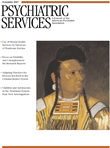For the first time since 1998, enrollment in Medicaid has declined. The .5% drop in enrollment was accompanied by relatively modest growth in total Medicaid spending. After spending growth reached an all-time low of 1.3% in fiscal year (FY) 2006, it increased to 2.9% in FY 2007, according to the seventh annual 50-state survey of Medicaid officials released by the Kaiser Commission on Medicaid and the Uninsured. Moving into FY 2008, state legislatures have authorized program expansions that are estimated to yield a 6.3% growth rate.
State officials reported that the drop in enrollment was driven primarily by two factors. Two-thirds of states cited new requirements for documentation of identity and citizenship, which became effective in July 2006. New procedures were causing significant delays in processing applications, but most delays affected individuals who are eligible for the program. State officials also cited the relatively strong economy and resulting lower unemployment for reducing enrollment. Reasons cited for the slow growth in spending were the decline in enrollment and the continued transition from Medicaid to Medicare of prescription drug costs for enrollees dually eligible for Medicaid and Medicare. States are still obligated to pay a maintenance-of-effort payment each month (known as the "clawback"), which is based on the number of dually eligible enrollees and the cost of their drugs, but these payments are now counted as a source of financing for Medicare and not as Medicaid spending, even though most states appropriate these payments as part of their Medicaid budgets.
For state policy makers, the amount of funding for Medicaid that is allocated from the state general fund is a key factor, the survey notes. For the past few years the state share of Medicaid spending has increased more rapidly than total Medicaid spending because the federal matching rate has declined for more than half of states. The matching rate is recalculated annually based on average personal income for each state. Declines in the matching rate place pressure on states to allocate additional state general revenues to maintain current program levels. State general fund spending for Medicaid increased on average by 3.0% in 2006 and by 3.2% in 2007. For 2008 state legislatures have appropriated an increase in state general funds for Medicaid that averages 7.8%.
An improved economy coupled with the drop in enrollment and slow spending growth has allowed states to focus on program restorations, improvements, and expansions that have not been possible for the past several years. Every state implemented some type of provider rate increase in 2007, and 49 states planned to increase rates for at least one provider group in 2008. More than half of states made positive eligibility changes in 2007 or plan to do so in 2008. Such changes include increasing income limits for eligibility; expanding coverage to include a new group, such as foster children or persons with disabilities who are working; or streamlining the application or renewal process. A few states restored or added new benefits in 2007 and 2008. For the first time since at least 2003, no state planned a cut in benefits for 2008.
In 2006 there were 47 million uninsured Americans, an increase of 2.2 million from 2005. Forty-two states reported that they have efforts under way to expand coverage to their uninsured population by using Medicaid as a financing vehicle. Many efforts, however, will depend on the outcome of the federal debate on the reauthorization of the State Children's Health Insurance Program in light of the President's veto.
Many states have made quality improvement a priority in order to get better value from Medicaid dollars. In 2008 a total of 44 states will be using performance data from managed care organizations in the Healthcare Effectiveness Data and Information Set (HEDIS) or the Consumer Assessment of Health Plans Study (CAHPS) to measure and provide incentives for improved performance.
The survey report, As Tough Times Wane, States Act to Improve Medicaid Coverage and Quality: Results From a 50-State Medicaid Budget Survey for State Fiscal Years 2007 and 2008, is available on the Kaiser Foundation Web site at www.kff.org. Related materials include an issue brief, Why Did Medicaid Spending Decline in 2006? A Detailed Look at Program Spending and Enrollment, 2000–2006, and updates with the most current Medicaid enrollment and spending data.

